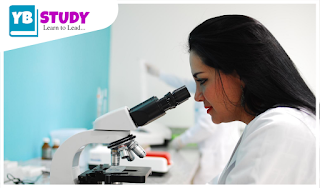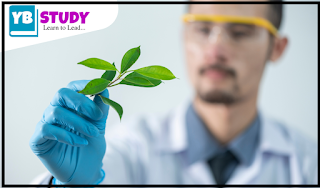What is Biotechnology | Scope | Application
What is Biotechnology | Scope | Application?
What is biotechnology?
Biotechnology has been defined as a multidisciplinary field in which agriculture, pharmacy, food science, forestry, and medicine make extensive use of biology, chemistry, and various processes. Probably the first Hungarian engineer to use the Biotechnology word was Carl Araki, in 1919.
The internationally accepted definition of biotechnology is as follows.
Biotechnology uses any technology that uses biological systems and living things or to create or generate products or processes for specific uses (Convention on Biological Diversity, Article 2. Terms of Use, United Nations. 1992).
Biotechnology consists of basic and applied research that integrates different approaches taken through the technology and application of biological sciences such as cellular, molecules, bioinformatics, and applied marine microbiology. Research and development of biological components and functional foods for aquatic organisms, cellular and molecular diagnostics, as well as management of diseases related to aquatic, toxicology, and environmental genomics, biological safety related to the cultivation and processing of marine organisms, and bio-safety. Quality management and control in freshwater, biofuels, and laboratories.
Scope of biotechnology:
Biotechnology is used to improve the desired character in biological systems. Biotechnology is used whether it is resistant to crop diseases, drug production, excellent performance, etc.
If the ability to endure adverse effects in one’s life is found to be desirable. This character is transferred to the plants of agricultural crops so that they grow in low irrigation conditions. Thus, the efficiency and growth of the new plant increase compared to its ancestors. The same plant that does not tolerate drought conditions is drought tolerant after the implementation of the principles of biotechnology.
This is possible because the genes responsible for tolerating drought conditions in another life have been transferred to the genome of our desired culture. Therefore, our desired harvest is drought resistant and grows well.
Thus biotechnology includes life sciences (biology), the technology of other disciplines (chemistry, physics, computer science, etc.), and engineering sciences.
Biotechnology is just as important as it is interesting to us because it is a part of our daily lives (it has been used for over 6000 years in the manufacture of bread and cheese) and it promises great progress in overcoming the great challenges of our time.
Types of biotechnology
Biotechnology is a science that has many branches of study. Everyone is in charge of a specific area of application which is particularly beneficial for certain situations. Therefore, we will talk about the main types of biotechnology that exist.
As mentioned, there are many types of biotechnology, including:
Medical Biotechnology
Medical biotechnology uses living cells and other cellular components to improve people’s health.
One of the main uses in medical biotechnology is its use for the treatment of some diseases, understanding the biology of human cells, is different from others.
It is mainly used in the manufacture of pharmaceutical products that contribute to the cure or treatment of certain diseases. All this, however, before studying cells, bacteria in others. Among other factors, vaccines and antibiotics are prime examples.
Agricultural biotechnology
Agricultural biotechnology is one of the crops and plants used to improve. In general, it focuses on the development and research of genetically modified plants, to improve their characteristics, including plants, making them resistant to weather and pests.
It contributes to the improvement of crops and the creation of sustainable agriculture; This leads to crop growth and reduction of pollutants.
Industrial biotechnology
Industrial biotechnology is a component that contributes to the creation of industrial components and the restoration of others through fewer pollutants.
It is basically in the manufacture of new ingredients used at the industry level, such as alcohol, detergents, and others. Where instead of changing the existing they improve their application by making it environmentally friendly. This will reduce its impact on environmental pollution.
Main applications and uses of Biotechnology
Any type of biotechnology offers continuous advantages in its application. And that is that they solve a wide range of existing environmental problems and improve other processes. For example, when used in the pharmaceutical and pharmaceutical industries, it offers many benefits, as it can cure some ailments and even study others. In addition, it makes other drugs more effective and therefore their effect on the disease.
Moreover, when applied in industry, it greatly reduces the polluting effects. Some techniques are used, which contribute to the degradation of components such as plastics, and others, which are of great benefit in reducing the environmental pollution. Biofuels, on the other hand, are also factors that are conducive to reducing the environmental pollution.
Undoubtedly, it is a tool that adaptively adapts to the environment and thereby creates measures and measures to help control the pollution of the environment and reduce it in the best possible way. It should be noted that not much is known about the types of biotechnology or the science itself. However, better satisfaction is expected.
Where We can use Biotechnology // Application of Biotechnology
Biotechnology is a form of science that is gaining popularity around the world, thanks to the benefits it is being used in many fields. So we can say that the field of biotechnology is very wide and on this occasion, we will understand what are the areas where it is most often applied and its benefits are available in each of them.
Biotechnology is a science that is gaining more and more popularity, and the truth is that it is not the least, because, in addition to many areas of application, they are offering different benefits in each of them.
The field of biotechnology can be classified into six main areas, according to its area of use, which are: health, industrial, plant, environment, animal, and food. So this time we are going to learn about the main area of application and its importance in each of them.
Food sector
This technology plays a fundamental role in the food sector; Thanks to that, you will get a lot of health that is rich in nutrients and medicinal properties. In addition, it allows the production of large quantities of food and prolongs its useful life, which manages to reduce the drought of the population; Having more food meets the demand.
Pharmaceutical industry
The field of biotechnology in the pharmaceutical industry produces natural, synthetic, and even semi-synthetic antibiotics. In addition, it allows obtaining insulin, vaccines, and serums that help in the treatment of various diseases.
Environment
Another area of use of this technology is in the environment; Thanks to that, it is possible to create biodegradable materials, purify wastewater, reduce and eliminate various pollutants that exist, as well as allow waste treatment. But this is not all, because the sole purpose of preserving the different species that exist in the world can also be used in this area; Something that is definitely beneficial.
Agriculture
Biotechnology plays a very important role in agriculture; There are many benefits to doing research in different ways. Among these benefits we can mention the following:
- Take plants and crops that are resistant to pests, insects, and diseases.
- Herbicide tolerance.
- This allows for a healthy crop with high nutritional value and medicinal properties.
- Achieving tolerant crops to certain soil metals like aluminum.
- Develop and obtain genetically modified or transgenic crops.
- As can also be seen, the field of biotechnology is very wide, as it is commonly used in various fields of study;
- This is mainly due to the many benefits available in each of them. That is why its use has spread rapidly around the world.


